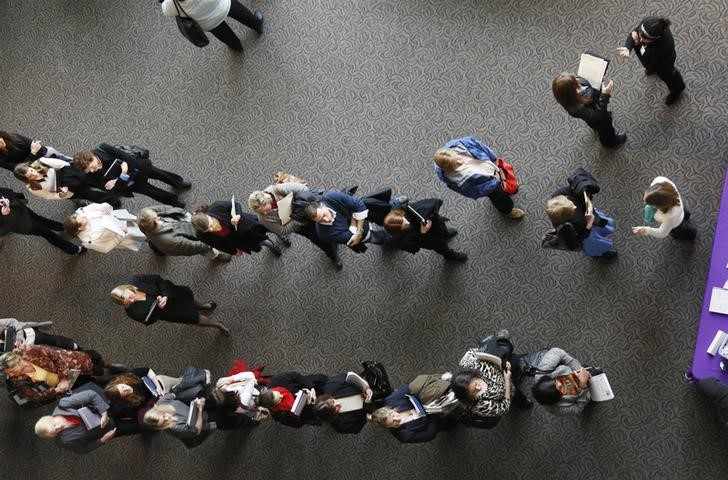Investing.com – All eyes will be on the U.S. employment report for September as markets look for clues on the state of the labor market and its impact on the Federal Reserve’s (Fed) future return to policy normalization.
The U.S. Labor Department will release its September nonfarm payrolls (NFPs) report at 8:30AM ET (12:30GMT) on Friday.
The consensus forecast is that the data will show jobs growth of 170,000, following an increase of 151,000 in August, the unemployment rate is forecast to hold steady at 4.9%, while average hourly earnings are expected to rise 0.2% after gaining 0.1% a month earlier.
An upbeat employment report will point to an improving economy and support the case for higher interest rates in the coming months, while a weak report would add to uncertainty over the economic outlook and push prospects of tighter monetary policy further off the table.
According to payroll processing firm ADP’s report released on Wednesday, non-farm private employment rose by a seasonally adjusted 154,000 last month, below forecasts for an increase of 166,000.
Despite the report’s poor track record as a leading indicator for the official data, market participants still take heed of the indications.
Even though the headline number missed consensus, it was still a strong report showing that the current record of consecutive monthly job gains continued in September.
“With job openings at all-time highs and layoffs near all-time lows, the job market remains in full-swing,” Moody’s Analytics chief economist Mark Zandi asserted after the ADP release.
“Job growth has moderated in recent months, but only because the economy is finally returning to full-employment,” Zandi explained.
Average earnings may trump NFPs on clues for a Fed move
With most Fed officials already having indicated that the economy is “very close” to full employment, attention may focus more on the state of wages, especially for a Fed that is waiting for inflation to return towards its 2% target.
The September jobs report arrives at a crucial time for both monetary policy and U.S. politics, while most analysts dismiss the possibility of a the Fed hiking the rates because, in the words of Goldman Sachs (NYSE:GS), “officials would be reluctant to raise rates in November so close to the U.S. presidential election.”
The next policy decision will arrive on November 2, just six days ahead of when U.S. citizens elect their next leader.
“The Fed doesn't want to look political and, to raise rates so close to the election, that would be a political act,” JP Morgan Funds chief global strategist David Kelly commented, according to CNBC.
“If they are intent on raising notwithstanding the data (they seem to have forgotten that labor market data is very lagging) and claim they are not politically motivated and really believe that the case for a hike has truly ‘strengthened’ then I dare them to hike in November as why wait until December, 4 months after Janet Yellen made the case for the next hike?,” Peter Boockvar, chief market analyst at The Lindsey Group, asked in one of his daily reports.
Boockvar later clarified “the dare” with regard to Friday’s numbers: “I dare them to raise rates in November if it’s north of 175,000 if they are (as) apolitical as they claim.”
Markets also put low odds on the possibility of a move in November with the probability sitting at just 13.4%, according to Investing.com's Fed Rate Monitor Tool. The chance of a rate hike in December stood at 63.0%.
“Now, to seal the deal surrounding the open question of whether November's Federal Open Market Committee meeting is in fact ‘live’, we would need a strong US jobs report tomorrow, particularly on the average hourly earnings side if payrolls are indifferent,” John Hardy, head of FX strategy at Saxo Bank.
Markets ahead of the employment report at 7:17AM ET (11:17GMT)
As investors waited for the release, the dollar was moving higher while gold bounced off four-month lows.
The U.S. dollar index, which measures the greenback’s strength against a trade-weighted basket of six major currencies, rose 0.35% to 97.00, while gold for December delivery on the Comex division of the New York Mercantile Exchange gained 0.48%, or $6.05, to $1,259.05.
Meanwhile, U.S. futures pointed to a lower open with investors cautious ahead of the release. The blue-chip Dow futures fell 35 points, or 0.19%, the S&P 500 futures lost 6 points, or 0.28%, while the tech-heavy Nasdaq 100 futures traded down 12 points, or 0.25%.
Stay up-to-date on market expectations for future Fed policy moves by visiting:
